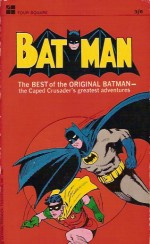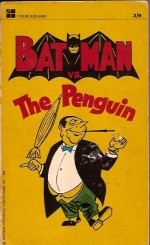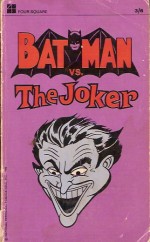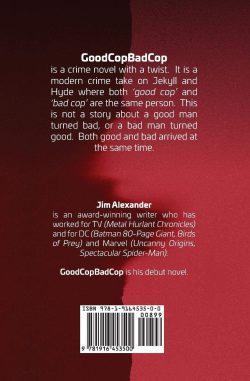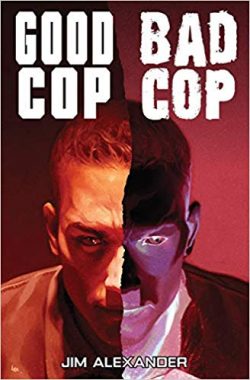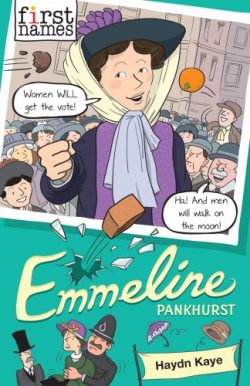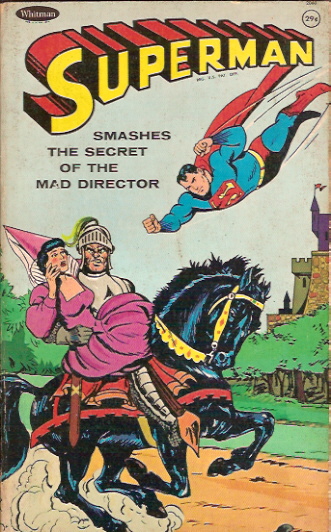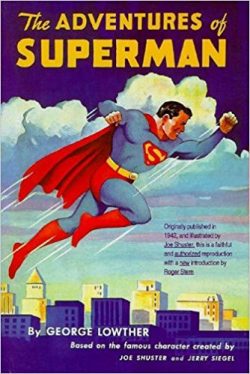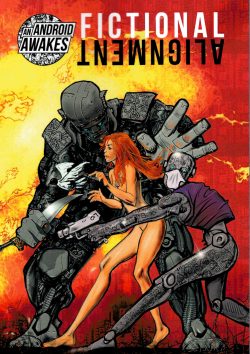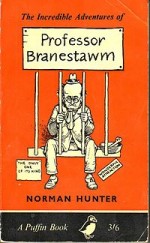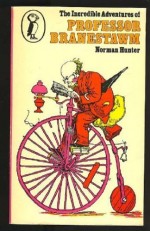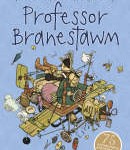
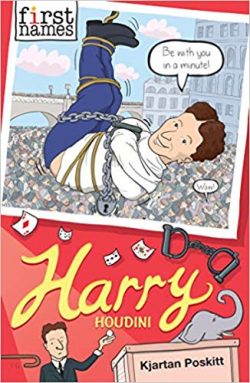
By Andrew Prentice & Mike Smith (David Fickling Books)
By Kjartan Poskitt & Geraint Ford (David Fickling Books)
ISBN: 978-1-78845-023-2 (Amelia) 978-1-78845-024-9 (Harry)
Since its premiere in 2012, The Phoenix has offered humour, adventure, quizzes, puzzles and educational material in a traditional-seeming weekly comics anthology for girls and boys. The vibrant parade of cartoon fun, fact and fantasy has won praise from the Great and the Good, child literacy experts and the only people who really count – a dedicated legion of totally engaged kids and parents who read it avidly…
David Fickling Books provides other types of reading matter: novels, graphic novels and a newish imprint of cartoon and strip illustrated biographies highlighting historical and contemporary groundbreakers and earthshakers.
First Names introduces young readers to noteworthy achievers rightly deemed role models and adds now to its initial offerings Emmeline Pankhurst and Elon Musk the life stories of Amelia Earhart and Harry Houdini. Devised along the lines of the mega-successful, eternally-engaging Horrible Histories books, these prose paperbacks come with a superabundance of monochrome cartoon illustrations to keep the pace of learning fast and fact-packed, and are bright, breezy, easily-accessible hagiographies with the emphasis on graphics.
Written by Andrew Price, Amelia Earhart tracks the short but brilliant career of the indomitable aviation pioneer and women’s rights activist, adroitly delineating her character and achievements while deftly downplaying – but never sugar-coating – the facts of her tragic early death.
The reader gets a taste of her indefatigable character and gumption in ‘Introduction – Kansas, Winter 1907’ before ‘Amelia Arrives’ and ‘Amelia Gets A Chance’ follows an early life of frustrated potential and domestic tribulation before indomitable Amelia Mary “Millie†Earhart finally achieves her only ambition in ‘Amelia Takes To The Sky’.
The legend we appreciate – and think we know now – is carefully and engagingly deconstructed in successive chapters (‘Amelia Earns Her Wings’, ‘Amelia Takes The Plunge’ and ‘Amelia Finds Fame’) as we learn how much more there was to the young woman who passionately believed there was no task or job only men could accomplish.
Glory and notoriety – with all its rewards and pitfalls – follow in ‘Amelia Goes Solo’, ‘Amelia Soars Even Higher’ and ‘Amelia Flies The World’ before the details of ‘Amelia’s Final Flight’ are covered. Even in her own brief lifetime, Amelia Earhart was a global inspiration, and appendix ‘Then Along Came Jerrie’, reveals how one young girl who followed that final fateful excursion – to become the first woman to fly around the world – eventually accomplishing the feat in “Millie’s†name…
Aiding and abetting, illustrator Mike Smith crafts engaging and contextualising pictorial vox-pops and chats with the pilot herself and clarifies routes and technicalities, capturing the personalities of the period in witty cartoon spreads such as ‘Millie Explains: Being a Girl in 1910’, ‘Amelia Explains: Barnstorming’, ‘Amelia Explains: Early Aeroplanes’, ‘Air Races’, ‘Amelia’s Eventful Atlantic Crossing’ and ‘Amelia’s Round-the World Scrapbook’. As always, there are drawings and visuals on drawings on practically every page, with absorbing sidebars such as ‘The First Female Flyers’, offering potted biographies of Earhart’s rivals, teachers and comrades of the air.
Working in tandem and conspicuous light-hearted good taste, the creators have constructed a timeless appreciation to a woman who fired up the world and proved to naysayers that women were every inch the equal of men.
An indisputable legend and household name, the incredible life and eventful career of Harry Houdini is beyond the comprehension of most modern adults, but – as sketched out here by scribe Kjartan Poskitt & and illustrator Geraint Ford – is impressively covered in bullet points, snapshots and vignettes for the younger crowd who still retain their sense of sheer wonder.
A taste of the magnificent showman’s character comes in the ‘Introduction’ relating one of his most famous stunts before ‘Who Was Harry’ debunks some myths and details how ambitious, driven Hungarian émigré Ehrich Weiss came to America and began his greatest trick: turning a poor Rabbi’s son into the greatest magician, escapologist and illusionist the world has ever seen.
The early years are covered in ‘Harry And The Headless Man’ and how his initial brother act become a husband and wife team in ‘Harry And The Other Houdinis’, after which ‘Harry Hits The Bottom’, ‘Harry Gets A Break’ and ‘Harry Heads Abroad’ exposes the steady road to stardom – and all the traps and pitfalls the human marvel had to negotiate.
A global success, Houdini returned to America and started consolidating his life and legend, (as seen in ‘The House That Harry Built’) while always ramping-up his act in ‘Harry Gets Dangerous’, ‘Harry’s Death-Defying Mysteries!’ and ‘Harry Hangs Upside Down’…
His love of inventions and gadgets is highlighted in ‘The Sea Monster And Other Sensations!’, as is his dalliance with movies, while his relentless pursuit and exposure of psychics, mediums and other conmen is covered in ‘Harry And The Spirits’. It’s also the closing of the final curtain as we learn of the ludicrous and tragic circumstances leading to his death…
At least his influence on magicians and other performers is properly addressed in The Legend Lives On…
This biography is a bombastic thrill ride cunningly limned by Mike Smith who provides contextual illustrations, comic strips and details how tricks and stunts are performed in numerous pictorial asides such as ‘Magic Fingers’, ‘How To Be A Mind-Reader’, ‘So How Was It Done?’ and ‘How Jean Eugene Robert-Houdin Changed Magic’.
We will never know all the truths about this inspirational, world-changing performer and crusader but at least here is a perfect introduction into his astounding world of wonder…
Invoking the heady baby boomer days of factual entertainment comics such as Look and Learn and Tell Me Why, these extremely enticing books promise – and resoundingly deliver – a measured and informative dose of palatable fact from the world’s rich treasury of past-and-present Stuff To Know, and do it with great charm and efficiency.
More Please!
First Names: Amelia Earhart Text © Andrew Prentice 2019 and illustrations © Mike Smith 2019. All rights reserved.
First Names: Harry Houdini Text © Kjartan Paskitt 2019 and illustrations © Geraint Ford 2019. All rights reserved.
First Names: Amelia Earhart and First Names: Harry Houdini will be published on April 4th 2019 and are available for pre-order now.

